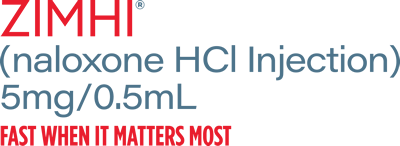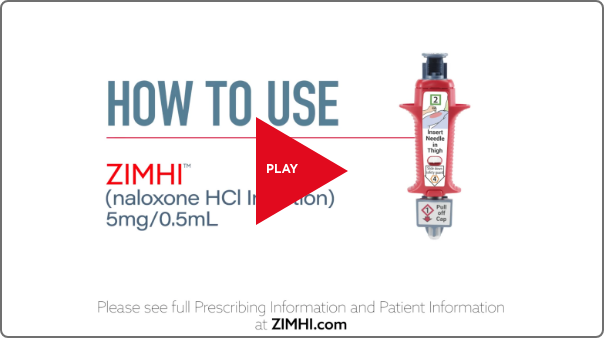AN OPIOID OVERDOSE
EMERGENCY RESCUE
SITUATION
You do not need to be a trained medical professional to use ZIMHI. A doctor or pharmacist can show you how to use ZIMHI. This way, you can be ready to give it in an opioid overdose emergency rescue situation.
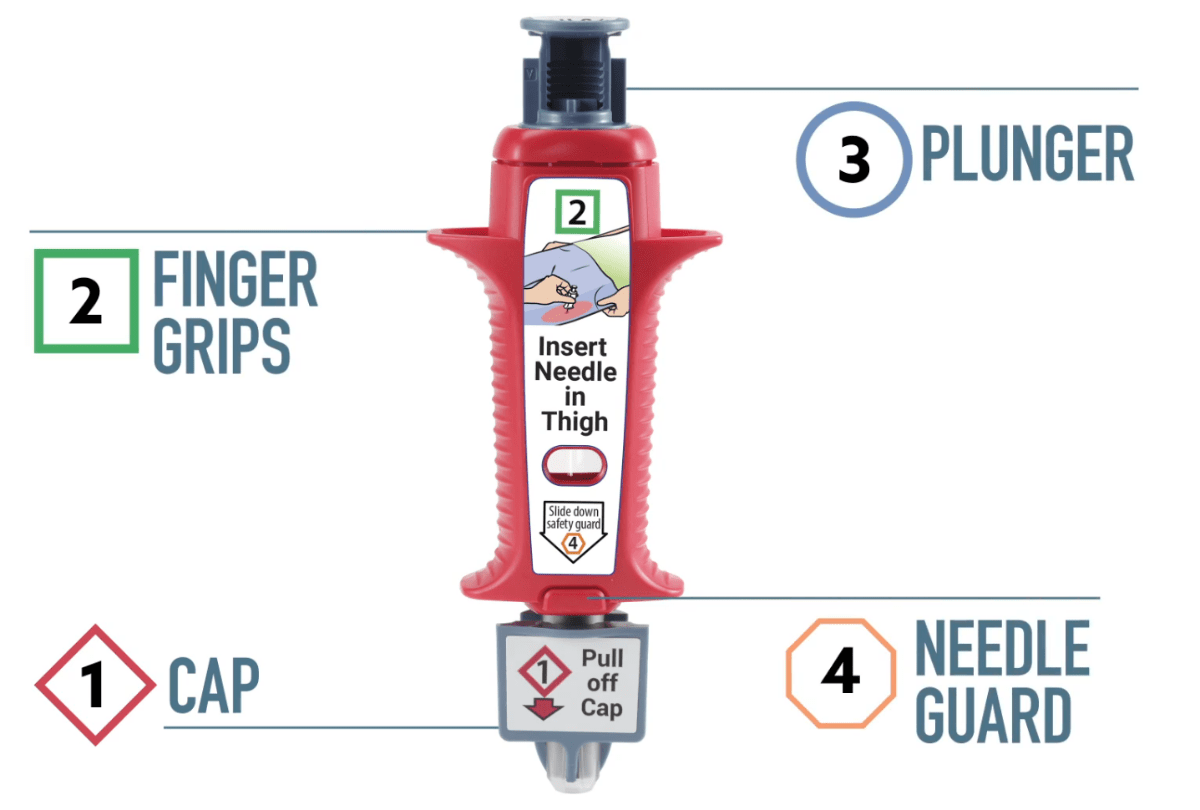
HOW TO USE ZIMHI IN AN OPIOID OVERDOSE EMERGENCY RESCUE SITUATION
You do not need to be a trained medical professional to use ZIMHI. A doctor or pharmacist can show you how to use ZIMHI. This way, you can be ready to give it in an opioid overdose emergency rescue situation.

HOW TO USE ZIMHI: 4 PARTS, 4 SIMPLE STEPS
PRESS
PRESS needle into outer thigh after twisting off needle cap
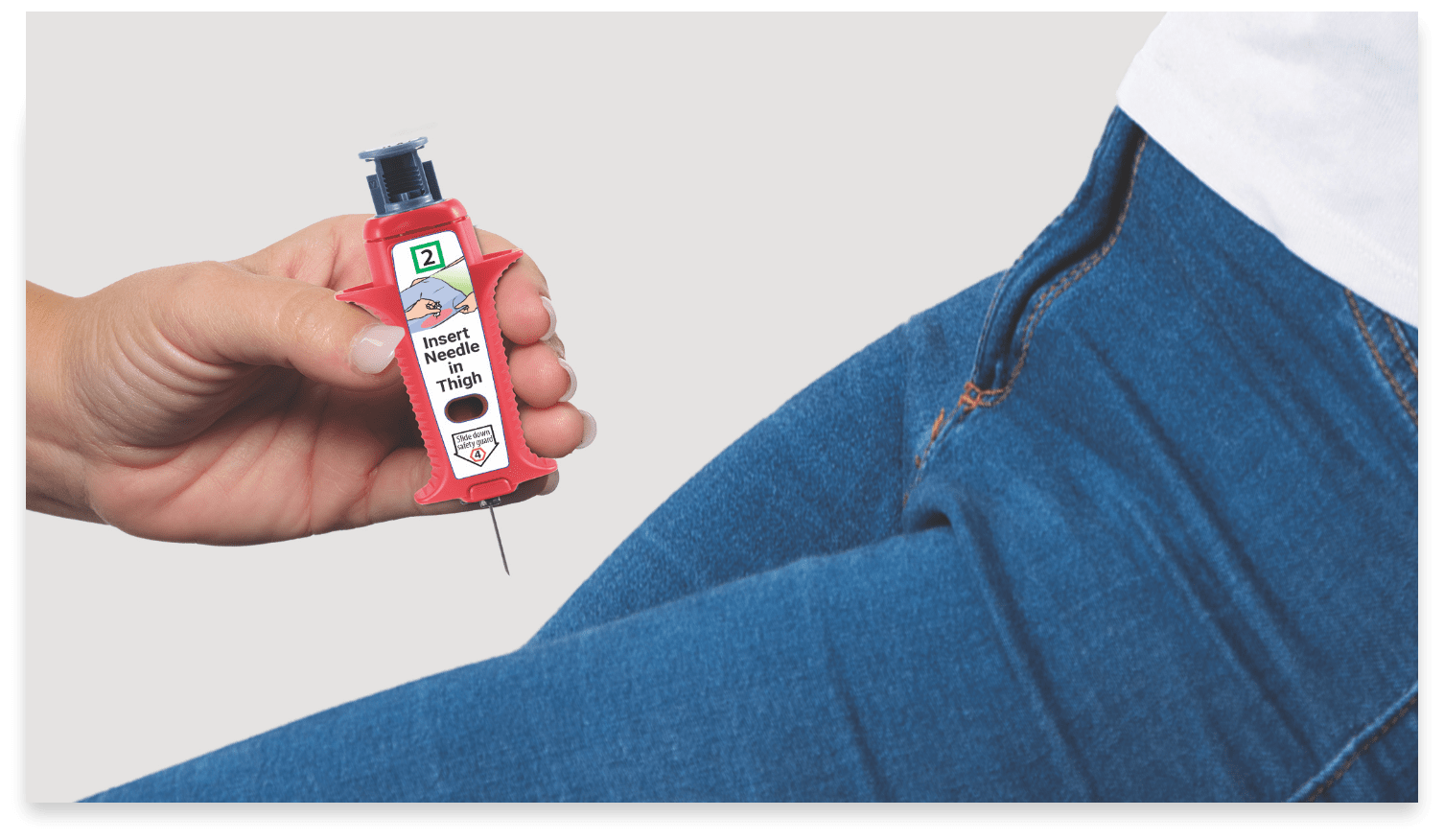
PUSH
PUSH plunger to inject until it clicks and hold for 2 seconds before removing needle
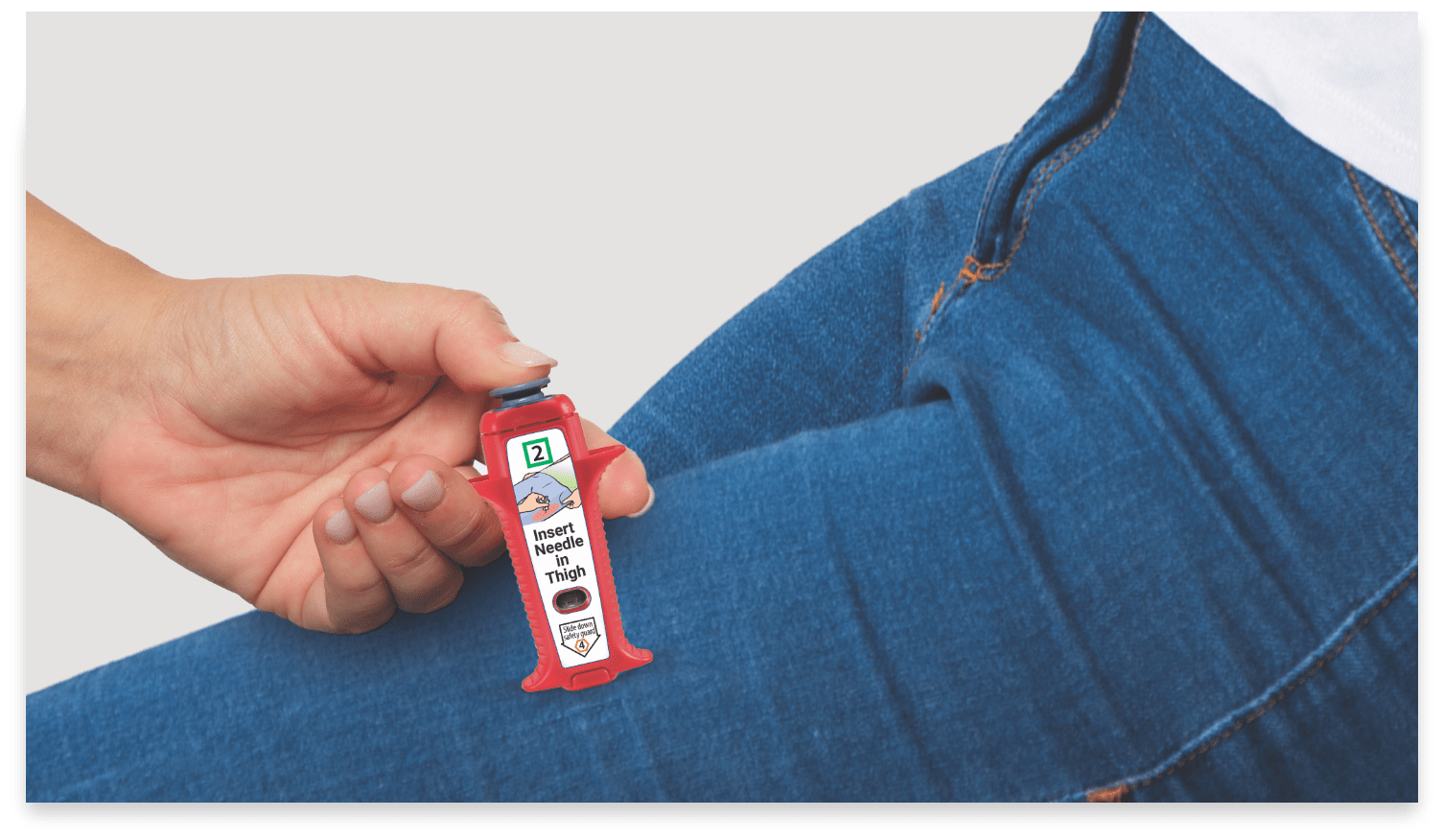
PULL
PULL the safety guard over the needle using one hand, with fingers behind the needle
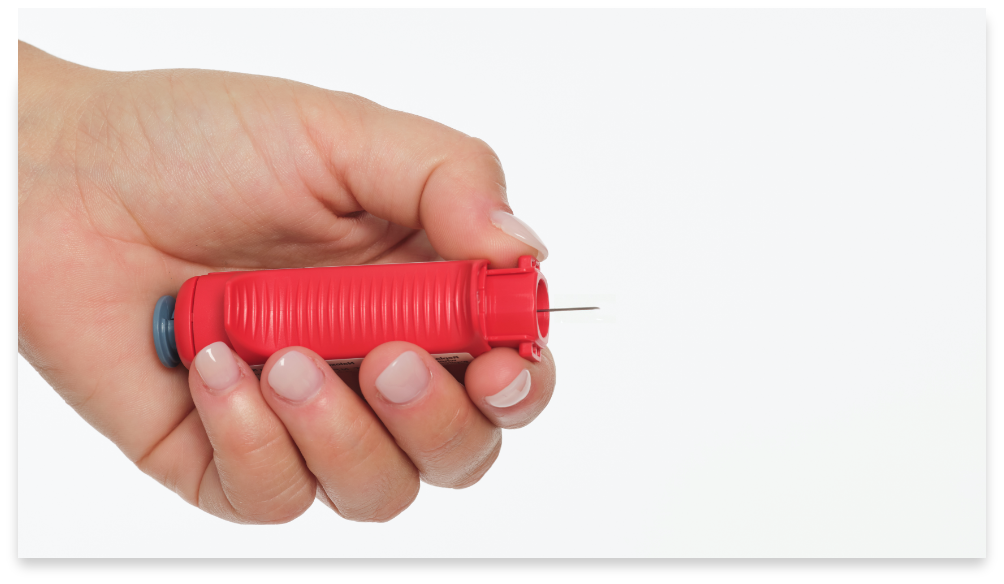
PLACE
PLACE the used syringe back into it’s blue case and close it
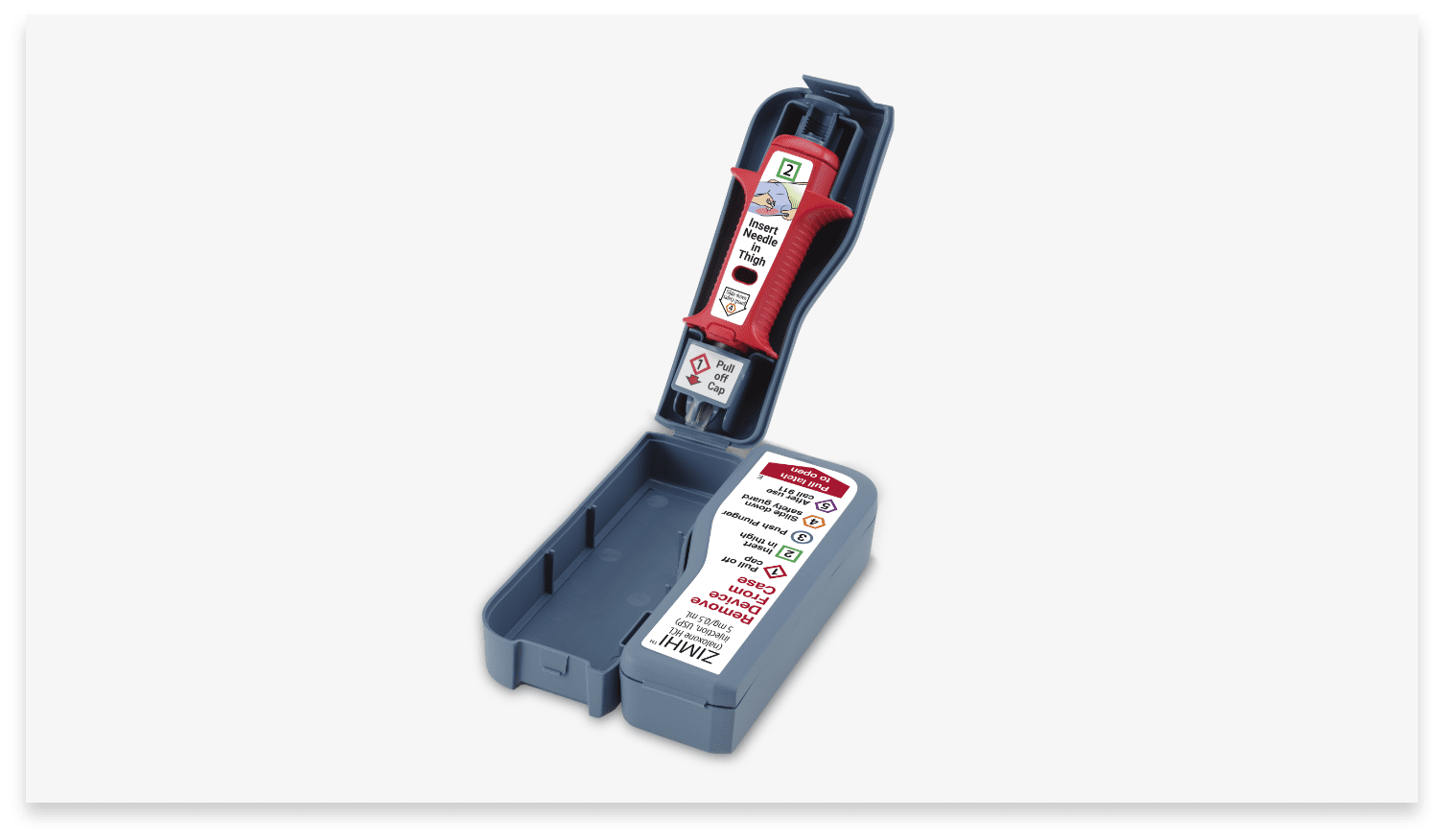
Please read the full Instructions For Use before giving ZIMHI.
HOW TO USE ZIMHI: 4 PARTS, 4 SIMPLE STEPS
PRESS
PRESS needle into outer thigh after twisting off needle cap

PUSH
PUSH plunger to inject until it clicks and hold for 2 seconds before removing needle

PULL
PULL the safety guard over the needle using one hand, with fingers behind the needle

PLACE
PLACE the used syringe back into it’s blue case and close it

Please read the full Instructions For Use before giving ZIMHI.
IMMEDIATELY AFTER GIVING ZIMHI…
Call 9-1-1
Keep a close watch on the
person until help arrives
If the person doesn’t respond in
2 to 3 minutes, give an additional
dose of ZIMHI using a new device
WATCH A VIDEO TO SEE HOW TO GIVE ZIMHI
REMEMBER TO KEEP ZIMHI IN A SAFE PLACE THAT IS EASY TO GET TO
DURING AN OPIOID OVERDOSE EMERGENCY RESCUE SITUATION.
Make sure that anyone who may need to use it knows where it is.
REMEMBER TO KEEP ZIMHI IN A SAFE PLACE THAT IS EASY TO GET TO
DURING AN OPIOID OVERDOSE EMERGENCY RESCUE SITUATION.
Make sure that anyone who may need to use it knows where it is.
ALWAYS BE PREPARED:
Download a guide to using ZIMHI
ALWAYS BE PREPARED:
Download a guide to using ZIMHI
WHY ZIMHI?
IS IT AN OVERDOSE?
ORDER ZIMHI
In an opioid overdose emergency,
ZIMHI MAY MAKE ALL
THE DIFFERENCE


In an opioid overdose emergency,
ZIMHI MAY
MAKE ALL THE
DIFFERENCE


In an opioid overdose emergency,
ZIMHI MAY
MAKE ALL THE
DIFFERENCE
Reference: ZIMHI. Prescribing information.
INDICATION
ZIMHI is a prescription medicine used in adults and children for the treatment of an opioid emergency, such as an overdose or a possible overdose with signs of breathing problems and severe sleepiness or not being able to respond. ZIMHI is to be given right away by a caregiver and does not take the place of emergency medical care. Get emergency medical help right away after the first dose of ZIMHI, even if the person wakes up.
IMPORTANT SAFETY INFORMATION
Do not use ZIMHI if you are allergic to naloxone hydrochloride or any of the ingredients in ZIMHI.
ZIMHI is used to temporarily reverse the effects of opioid medicines. The medicine in ZIMHI has no effect in people who are not taking opioid medicines.
Use ZIMHI right away if you or your caregiver think signs or symptoms of an opioid emergency are present, even if you are not sure, because an opioid emergency can cause severe injury or death.
Family members, caregivers, or other people who may have to use ZIMHI in an opioid emergency should know where ZIMHI is stored and how to give ZIMHI before an opioid emergency happens.
Get emergency medical help right away after using the first dose of ZIMHI. Rescue breathing or CPR may be given while waiting for emergency medical help.
The signs and symptoms of an opioid emergency can return within several minutes after ZIMHI is given. If this happens, give additional injections using a new ZIMHI prefilled syringe every 2 to 3 minutes and continue to closely watch the person until emergency help is received.
ZIMHI may cause serious side effects, including sudden opioid withdrawal symptoms, which may include: body aches, fever, sweating, runny nose, sneezing, goose bumps, yawning, weakness, shivering or trembling, nervousness, restlessness or irritability, diarrhea, nausea or vomiting, stomach cramping, increased blood pressure, or increased heart rate.
Other common side effects of ZIMHI include dizziness and injection site redness.
In infants under 4 weeks old who have been receiving opioids regularly, sudden opioid withdrawal may be life-threatening if not treated the right way. Signs and symptoms include: seizures, crying more than usual, and increased reflexes.
These are not all of the possible side effects of ZIMHI. Call your doctor for medical advice about side effects.
To report SUSPECTED ADVERSE REACTIONS, call 1-800-230-3935 or FDA at 1-800-FDA-1088 or www.fda.gov/medwatch.
IMPORTANT SAFETY INFORMATION and INDICATION for ZIMHI™
As the duration of action of naloxone hydrochloride is shorter than many opioids, keep the patient under continued surveillance and administer repeated doses of naloxone using a new ZIMHI device, as necessary, while awaiting emergency medical assistance.
Reversal of respiratory depression caused by partial agonists or mixed agonists/antagonists, such as buprenorphine and pentazocine may be incomplete. Repeat doses of ZIMHI may be required.
IMPORTANT SAFETY INFORMATION and INDICATION for ZIMHI™
